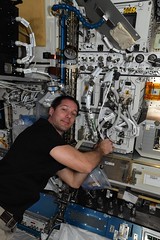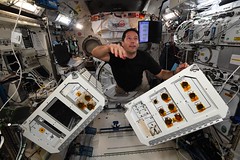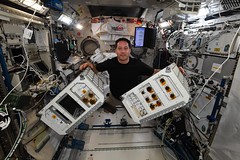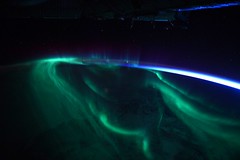Installing DECLIC
mercredi 3 novembre 2021 à 09:06Thomas Pesquet posted a photo:
Quand j’ai débuté ma carrière d’ingénieur à 23 ans, au CNES, je partageais mon bureau avec un ingénieur qui travaillait sur l’expérience Franco-américaine DECLIC… Aujourd’hui, 2̶0̶ ̶a̶n̶s̶ quelques années plus tard, j’opère cette expérience dans l’ISS . Si on me l’avait dit à l’époque, j’aurais eu du mal à y croire. Declic étudie les fluides supercritiques, un état qui n’est ni solide ni gazeux. C’est plus facile de les maintenir dans cet état en impesanteur, ça simplifie donc la tâche des chercheurs qui les étudient. Si on arrivait à maîtriser ce phénomène, les applications dans l’industrie pourraient améliorer certains processus : on s’en sert déjà pour enlever la caféine du café, par exemple :)
A pose with the new CNES facility DECLIC. It will look at supercritical fluids, so the point at where they show properties of both liquids and gases. It is easier to keep fluids in this state without gravity interfering so researchers will be able to analyse the phenomena better in weightlessness. And if we can master the phenomenon better many applications could be foreseen to improve industrial processes (techniques using supercritical fluids are already used to remove the caffeine out of coffee for example). This experiment hardware has a personal meaning to me, when I started my career as an engineer CNES I shared an office with one of the designers of this facility, fast forward 20 years and here we are! Now, no pressure to install it correctly :grimacing:
Credits: ESA/NASA–T. Pesquet
541C6282




